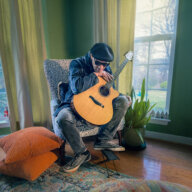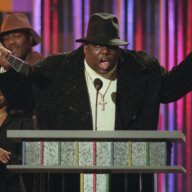Grady Hendrix has forever been at the intersection of the art and the practice of studying psychic activity and the paranormal, with having worked at the American Society for Psychical Research (the place that “Ghostbusters” was humorously based upon) and written books such as “My Best Friend’s Exorcism” and the spooky IKEA satire, “Horrorstör.” For his newest project, “Summerland Lost: A Ghost Story,” which he’ll bring to PhilaMOCA in the Eraserhood on Aug. 4, Hendrix takes all of his history-based knowledge into a live, one-man-show production without the ghost world’s usual bells and whistles.
“I wanted to tell the story of spiritualism, and use the Fox Sisters (three spiritualist New Yorkers of the 1800s: Maggie, Kate and Leah) as its spine, but couldn’t figure the right format,” says Hendrix. “I tried a graphic novel, a nonfiction book, a novel. Finally I went to a friend’s house and asked if I could tell him the story. Three and a half hours later, I stopped talking and realized that just telling the tale was the best way. No special effects, no music.”
The American Society for Psychical Research, where Hendrix worked as a librarian/archivist, was where he first encountered the ghostly and the paranormal — “a huge crash course in the history of ectoplasm, spirit photography and shaved cats,” he says. “I completely fell in love with the history of spiritualism in a short time. It was love at first sight. The ASPR is more focused on current research in other areas, and they know that I love this historical material, so they’re fine with what I do. And besides, no one has a sense of humor like a parapsychologist. Since the power of ghosts largely seem limited to wandering around abandoned buildings and making awkward noises, however, I feel like harnessing the power of gerbils might be more effective.”
With ghostbusting over, Hendrix turned his attention to writing and the four S’s – spirits, space, Satan and science. “I love writing about this stuff because it’s a way to make the way I feel become real, at least within the context of a book or a show,” he says about novels such as “Horrorstör,” which was a blast to write and “helped me blow off steam about all the terrible retail jobs I’ve had.”

“My Best Friend’s Exorcism” — where he told his story in the guise of a teen girl from the 1980s — was oddly a more starkly serious book than the IKEA satire in that Hendrix seriously confronted exorcism stories. “Exorcism books and movies are usually the story of some old guys tying a girl to her bed and yelling at her,” he says. “The possessed person barely matters. In “The Exorcist” we don’t know much about Regan because the story is about the priests having their faith tested, not her. So I knew I wanted to focus on her experience. Then, I had to deal with the fact that faith is central to exorcism stories, but I don’t think religious faith is as powerful now as it was in the past, so I had to find something that people would believe in as strongly. The obvious answer was friendship. My friends in high school saved my life, and that age is when friendships are at their strongest, so that meant that book had to be set in high school and my high school experiences of the 1980s.”
For his live show “Summerland Lost,” Hendrix took all of his knowledge and experience, included some of the greatest practitioners of spiritualism and tells the “100 % true” tale of of drunk Victorian teenagers who team up with the ghost of Ben Franklin (“he was the patron saint of America’s original tech boom, constantly appearing in people’s dreams and as a spirit during sittings, delivering inspiration and giving advice:”), to discover the truth about life after death, with biomechanical sex cults and Arctic explorers thrown into the mix.
“The history of spiritualism in America ties into the history of the suffragette movement, the abolition movement, the labor movement, the anarchist movement,” says Hendrix. “So many people get hung up on the question of whether these mediums were actually talking to spirits or committing fraud, but if you ignore that question you’re still left with a remarkable story, and some the most impressive close-up magic acts of the 19th century. Spiritualism envisioned humanity as one equal body that gave women the vote and freed the slaves. Before we could do those things, we had to dream them. Spiritualism was that dream.”
Fri, Aug 4 at 8 p.m., PhilaMOCA (Philadelphia Mausoleum of Contemporary Art), 531 N. 12th St., $10-$12, 267-519-9651, www.philamoca.org



























